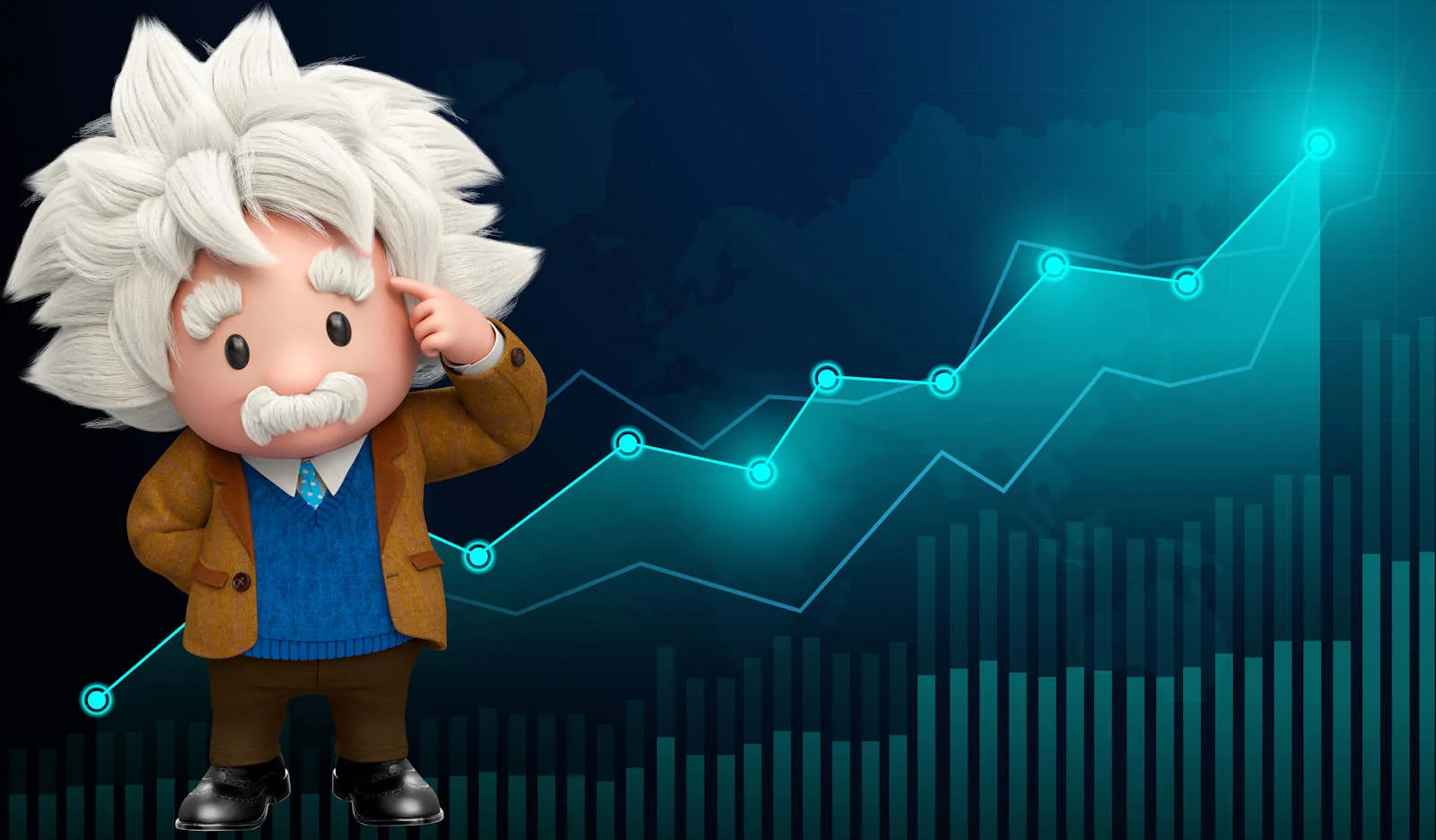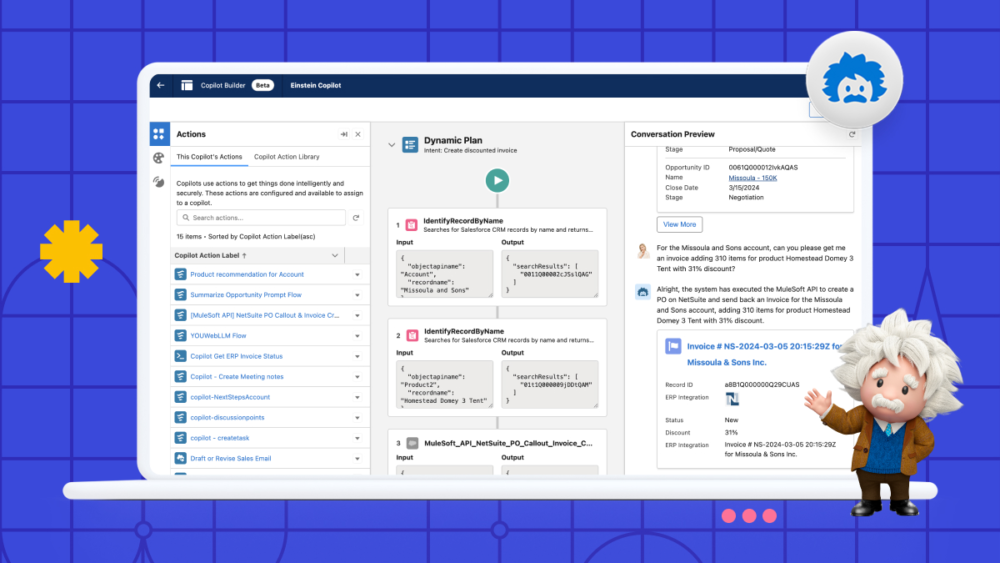
How genius coworker Salesforce Einstein Copilot AI can help your business
What can the Salesforce Einstein Copilot AI really do? To find out, I attended a live demo of the service last week. The very short answer to the question is “whatever your business needs”. But with a warning, now common during AI demos: beware of hallucinations.
Keeping data safe
Let’s rewind for a second. Back in September, Salesforce unveiled Einstein Copilot at Dreamforce, with safety of customer data one of the main USPs. “Your data isn’t our product”, were Salesforce CEO Marc Benioff’s exact words.
Then, in February, it announced that the product was entering public beta availability. Salesforce re-emphasised that the Einstein Trust Layer – the key feature that keeps customer data safe – was one of the reasons why customers could trust the answers and actions they’d get from Salesforce Einstein Copilot.
At the demo I attended, safety was front of mind once again. Both speakers, Salesforce Product Management leads Gary Brandeleer and Jaswinder Rattanpal, emphasised that Einstein was designed to understand what data is sensitive and what data isn’t. And whether the end-user has the appropriate access rights to have their query answered.
These measures stop confidential or sensitive data from leaking, but also serve another purpose: any potential “hallucinations” will be less damning if you compartmentalise underlying data.
Here, Rattanpal offered up some advice. “While we are at an age where we have these amazing tools, be careful because we are not at a stage when they can be 100% trusted. You should always have a human in the middle. That is especially true when you have information that may become public.”

Maximising efficiency
Salesforce is wise to put data safety at the forefront of its product development. I’m sure its more than 150,000 customers worldwide will appreciate it.
But what they will surely appreciate even more is the level of efficiency they can gain from Einstein Copilot. This stems from two principles that stand out as driving forces behind how Salesforce is approaching AI.
One is the principle that AI copilots fundamentally change how humans interact with software. That we go from a sequence of clicks to find what we’re looking for to asking questions and receiving an answer. That we now converse with software, rather than explore it.
Long term, that idea could fundamentally change software development itself. As of today, it reduces the time it takes to get something done. For any business with a heavy load of repetitive sales, marketing or customer service tasks, that’s worth noticing.
To achieve this, users can access Einstein across Salesforce’s interface. One click launches the assistant which, once prompted with a task, can be left to execute it while the user does something else. Then there’s the time saved from not having to go through heaps of information to extract an answer.
During the demo, Rattanpal demonstrated how Einstein neatly summarises an account’s entire financial history and populates different fields with the data, all from one prompt:
An example of Einstein deployed in a Salesforce homepage
The second principle is a mixture of customisation and availability. Salesforce wants users to be able to deploy Einstein Copilot across any modules they want. And it wants those deployments to be as customisable to each customer’s use case as possible.
Salesforce is well aware that not all of its 150,000 customers are the same. Making Einstein as flexible as possible – while still underpinned by the safety-first approach I mentioned above – will be key to helping its adoption.
To achieve this, Salesforce Admins can customise Einstein using Copilot Builder, Prompt Builder and Model Builder. Each offers increasingly complex levels of customisation, with Copilot Builder being a more out-of-the-box solution and Model Builder sitting on the other end.
Each leverages either standard actions or custom actions. Standard actions are common use cases such as “write an email” that can be used without much development, whereas custom actions typically require a Salesforce Trailblazer to be involved.
Not a copilot; a coworker
The byproduct of the above is, in some cases, an AI that feels more like a coworker than a copilot.
There was a moment during the demo when Brandeleer customised Einstein to answer whether or not a sales opportunity is actually worth spending time on. That’s a highly subjective query, but with enough data points, you can boil it down to a yes or no.
Here’s where it gets interesting. Say that you previously asked a colleague or a manager for an opinion; chances are the answer you’d get would be biased. After all, it’s only human to be biased.
Even if that colleague offered up a couple of data points as the basis of their answer, that wouldn’t compare to what AI can do. When Brandeleer demoed the above, Einstein Copilot’s answer was backed up with a dozen or so reasons, all derived from the data it had at its disposal. For a human to provide an answer of that calibre, it would probably take hours, if not days, of sifting through reports and distilling them into a response.
And here Einstein really showcases why AI can be much more than simply a tool that executes repetitive tasks. When you can ask a subjective question to a computer, one that you’d otherwise ask a human and get an answer that is better than what a human would offer, then you’re onto something (right, Larry Page and Sergey Brin?).
And if your AI happens to be particularly good at blocking out hallucinations, then the question becomes… what can’t Einstein do?
NEXT UP

Ryan Beal, CEO & Co-Founder of SentientSports: “Sports generate some of the richest datasets globally”
We interview Ryan Beal, CEO & Co-Founder of SentientSports, a startup using AI in fan engagement and athlete protection on social media.

Paris 2024: The greenest games ever
How the Paris 2024 Olympic Gamers organisers have lived up to their promise that this is the greenest Olympics ever

Salesforce, Workday team up to launch AI employee service agent
Salesforce and Workday have marked their new strategic partnership with the launch of an AI-powered assistant to handle employee queries.
